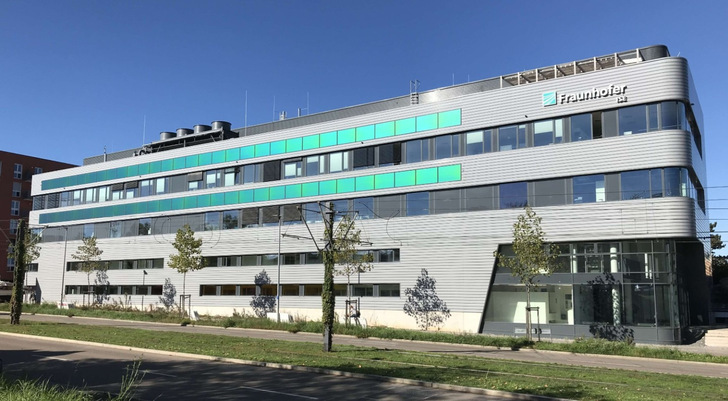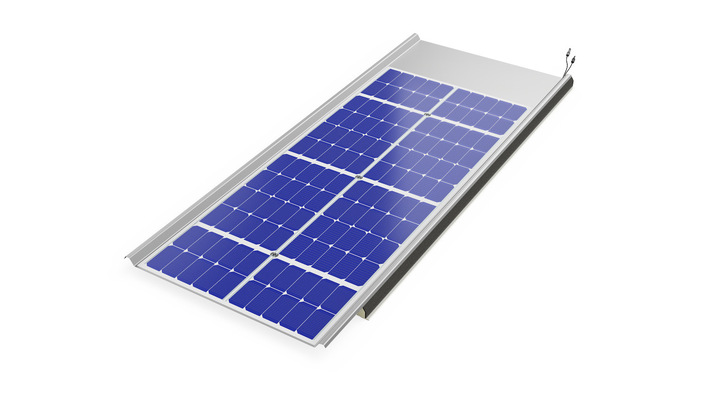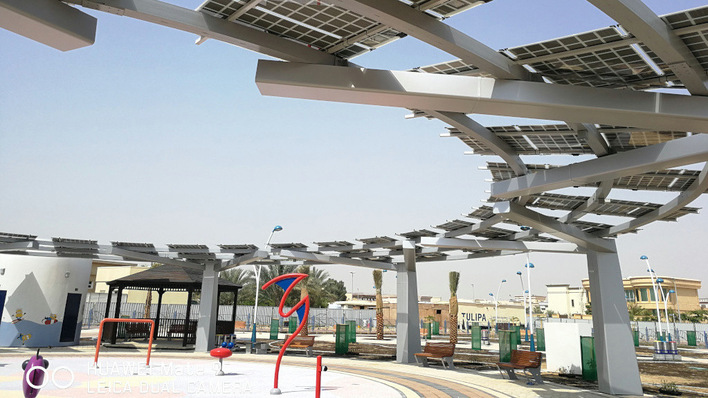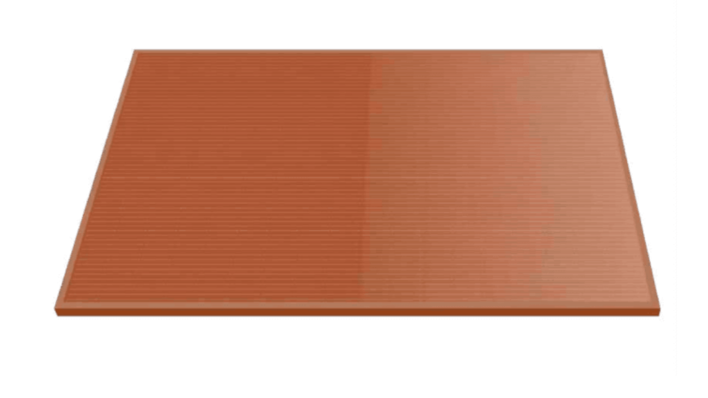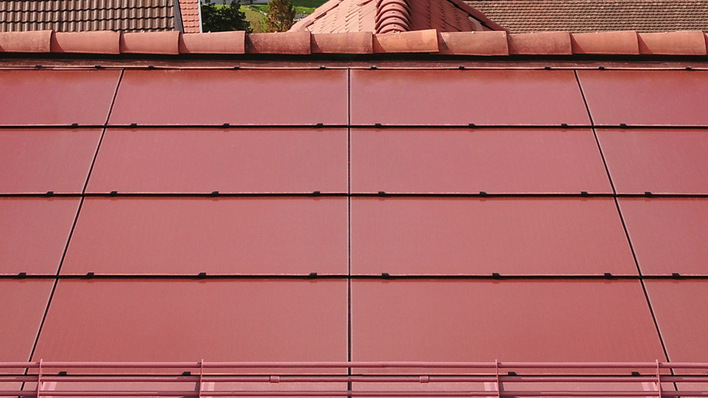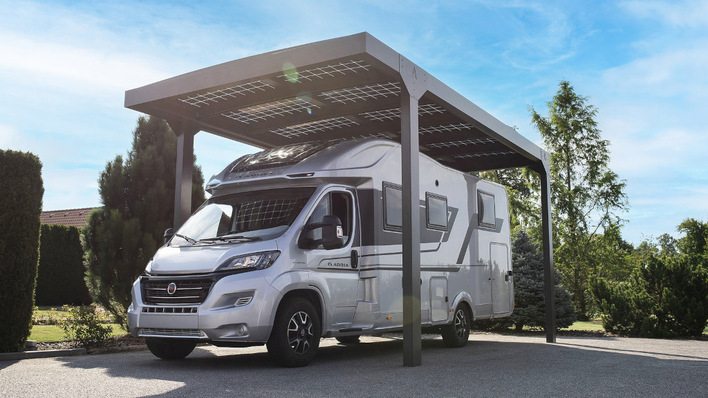The Morphocolor technology developed by Fraunhofer ISE makes it possible to colour the glass of solar modules. According to ISE, this preserves at least 90 per cent of the module efficiency. The innovative coloured layer reflects only a certain colour and allows the remaining sunlight to pass through virtually undisturbed. The design is inspired by the colour layer on the wings of the Morpho butterfly, whose intense blue wings create a colour impression that is angle-stable over a wide range. A wide range of colours can be realised with this technology.
BIPV: Potential of 1,000 gigawatts
In addition to roofs, large existing surfaces on buildings are also available for the installation of photovoltaic modules with facades. "Here, the modules must be architecturally designable to meet the requirements of the cityscape and the architecture of the building," Harry Wirth knows. He is the division manager for photovoltaic modules and power plants at ISE. Then the potential of building-integrated photovoltaics (BIPV) is huge: "For roofs and facades together, we estimate a technical potential of 1,000 gigawatts in Germany," Wirth calculates.
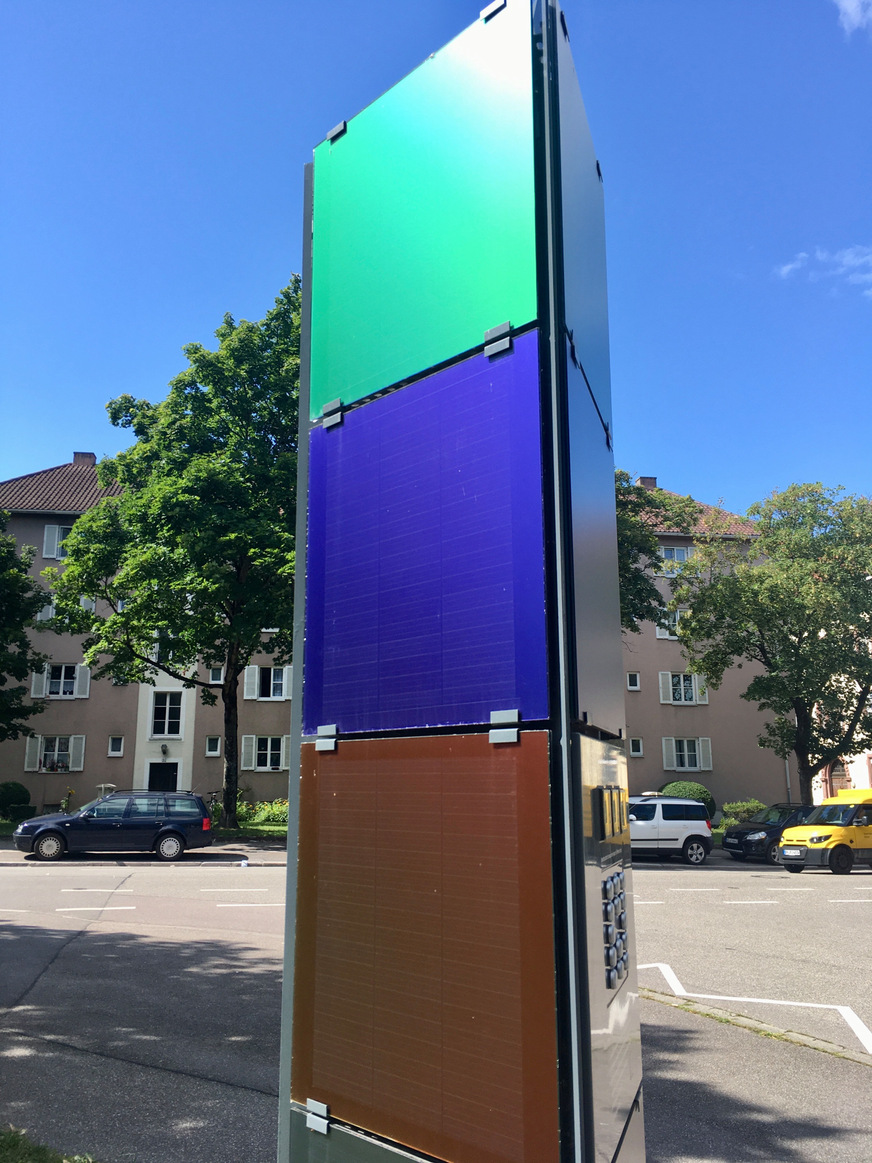
Benedikt Bläsi, Fraunhofer ISE
See also: Megasol and Saint-Gobain enter partnership for solar facades
Fraunhofer ISE is conducting intensive research on building-integrated photovoltaics. The BIPV modules with patented colour structure, which were specially produced for the pilot project, can now be integrated into the facade of the new laboratory building and subjected to intensive practical testing. "We installed sensors on the facade to record the real irradiation data," Wirth reports. At the same time, the generated current, the voltage of the modules and the AC power behind the inverter are measured.
Developing a fire protection concept
Based on the irradiation values, the researchers can calculate the expected yield. And compare it with the measured yield of the BIPV system. For the pilot installation on a publicly accessible facade, the research team adapted the module components, or rather the entire BIPV system, to the building regulations. In addition, the team developed a coordinated, electrotechnical safety concept for the fire protection requirements, among other things. The findings have been incorporated into the BIPV guidelines of the state of Baden-Württemberg. (nhp/mfo)
Also interesting: PV tubes and green roofs


